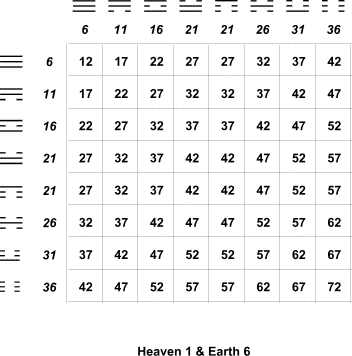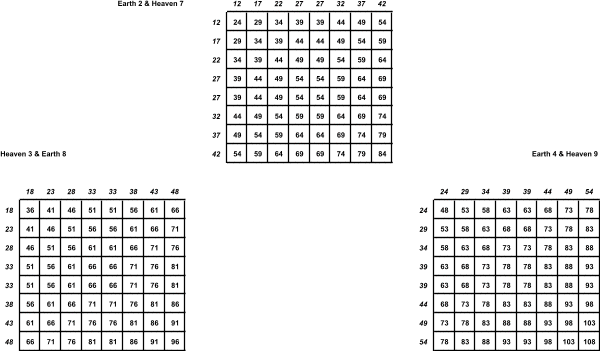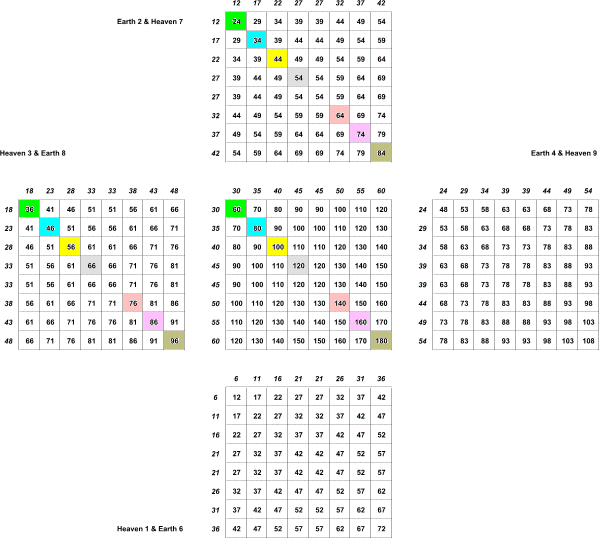
Just as each of the Yi Jing figures may be composed from the combination of two gua, we can use our eight scores to create a square table of eight rows and eight columns.

Each number in the table is simply the sum of the scores for its row and column.
Now we need to return to the First Step to calculate the scores for the He Tu pair of two and seven; and their scores are used to create a second table. We also need to calculate the scores and create tables for the pairs three and eight, and four and nine. (Note that we do not create a table from the pair five and ten.)

Then we shall have four tables, and from these we shall construct a fifth, central table. There are two ways to construct this final table, and boths ways give the same result. We can either work with the tables created from the pairs one and six, and four and nine; or the tables created from the pairs two and seven, and three and eight. The colour coded examples below highlight the source of the figures produced in the central table.

The method is simply addition. The number in the first row and first column of table two and seven, is added to the number in the first row and first column of table three and eight. And so on. It is as if table two and seven is laid straight on top of table three and eight, and the numbers in all the superimposed positions are combined.
Now we have five tables, and the fifth will be used in the Third Step. But, before we move forward, we must move back to the First Step. However, we are riding on a helix rather than trudging around a circle, so our return to the First Step brings us a stage further on our journey.
First Step (second time around)
or return to the First step
© Ken Taylor 2006